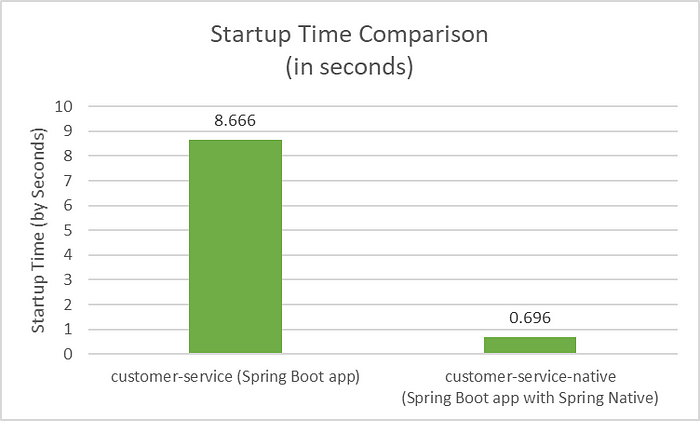Member-only story
Spring Native: The Wings That Make Spring Boot Fly
A step-by-step guide on how to integrate Spring Native into Spring Boot microservices

Despite its massive popularity in web and microservices development, Spring Boot has its limitations. Most noticeably, long startup time, and high memory consumption. The root cause lies in how Spring relies on reflection to inspect classes, interfaces, fields, and methods at runtime. Is it possible to have the same productivity without the use of reflection at runtime?
Yes! Spring Native has the answer!
We are going to explore in this story how to integrate Spring Native into a Spring Boot microservice named customer-service, a simple CRUD application to manage customers. We are going to have two customer-service apps, one vanilla Spring Boot app named customer-service, the other, customer-service-native, a Spring Boot app with Spring Native baked in. We are going to take a close look at the performance boost Spring Native brings to Spring Boot.
Here’s a sneak peek of the startup time comparison between customer-service and customer-service-native.

As you can see, the native Spring app has a blazing fast startup! To find out how this can be done, read on.
Spring Native
Spring Native compiles Spring applications into native executables using the GraalVM native image compiler at build time, providing a new way to deploy Spring Boot applications that can run extremely efficiently. Compared to JVM, GraalVM native images can enable cheaper and more sustainable hosting for many types of workloads. Using GraalVM native image provides key advantages, such as:
- Instant startup
- Instant peak performance
- Reduced memory consumption
GraalVM
GraalVM is a high-performance, cloud-native, polyglot runtime that provides significant improvements in application performance and efficiency which is ideal for microservices. Developed by Oracle Labs, GraalVM aims to…

